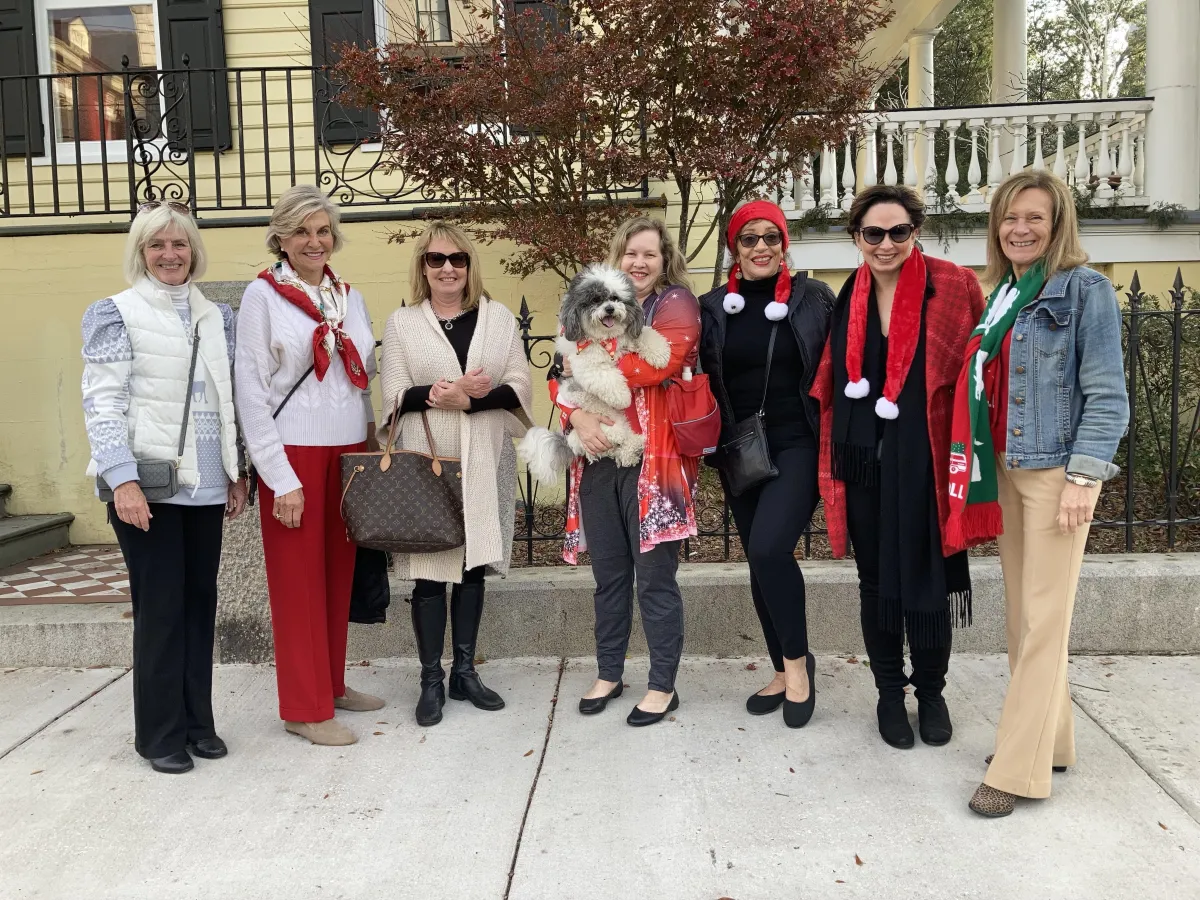Read Latest Blog

Believing is Seeing in Charleston this Christmas!
“It took faith, action and wit for Colonial Charlestonians to carve out of the old, the new.”
Karen McDaniel
A story of Resilience:
There is never a time when I tour this city that I don't learn more about it's past. Some good, some bad, but one thing is certain...it is never boring!

"Pulling back the curtain" for a peek into the history of Christmas in Colonial Charleston is full of surprises that haunt our memory and fill us with cheer - literally!
Libations were always a part of the fun, as the water was not fit to drink. Since the #1 "crop" in Charleston was cattle, there was plenty of fresh milk which could be sterilized with a little fortified wine or rum. Hence, the forerunner of the quintessential Christmas punch, eggnog, came from a children's milk punch call Syllabub.
Since boxwood, magnolia, citrus fruits and even feathers were abundant locally, these became decorations of choice. Fruit fans were also popular over the doorway as a symbol of wealth and hospitality.
In the early days of the colony, Christmas was spent quietly and church services were attended, as Christmas didn't officially begin until December 25th. Then it was celebrated with balls and weddings for the next 12 days until the 6th of January. Hence, the 12 days of Christmas!
One Christmas in particular that causes us to ponder was in 1860 just before the start of war. Christmas night, Col. Anderson stole his troops across the harbor in silent canoes to take Fort Sumter. While everyone was making merry that night, little did they know it would be an event that four years later would shake their world forever.
As we think about what Christmas means in the birth of Christ, let's also remember this warning to prepare for his return so that day does not catch us unawares too.